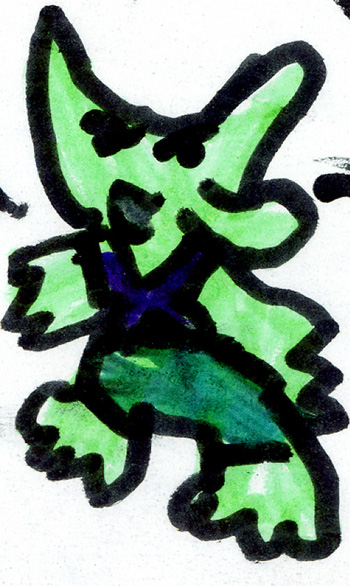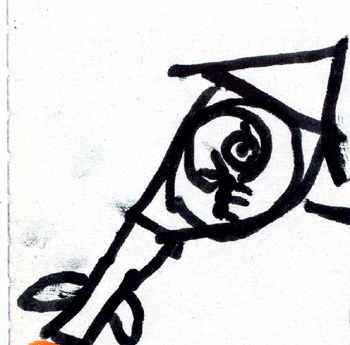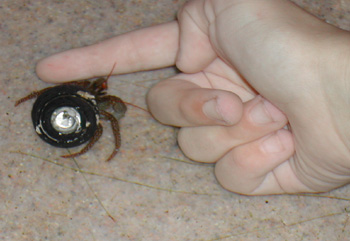On a busy weekday morning as members of the Free-Ride family prepare to get out the door:
Elder offspring: Let’s check if you have psychic powers.
Younger offspring: How can you check if I have psychic powers?
Elder offspring: We’ll see if you can tell which Pokemon is on the card before I flip it over.
Younger offspring: I don’t think I can do that.
Elder offspring: (to Dr. Free-Ride’s better half) Can you do an experiment with me?
Dr. Free-Ride’s better half: There’s not really time right now — I’m trying to get ready for work. What kind of experiment?
Elder offspring: I’m going to use Pokemon cards to give you a psychic test. That’s OK, we can do it tonight.
Dr. Free-Ride’s better half: Kiddo, every evening is a psychic test.
Category Archives: Kids and science
Why we don’t have a pet snake.
I was reading the comments on Dr. B’s brief query on ethical lines in response to a horrific story about the feeding of a live puppy to a large snake for the “entertainment” of teenagers, and I could not help but recall a conversation I had with my children a couple years ago about the feasibility of a pet snake.
Friday Sprog Blogging: art inspired by the space program.

Most weeks the Friday Sprog Blogging post draws on some conversation I have had with my kids that has something to do with science.
This week, knowing I had a Friday Sprog Blogging entry to write, the younger Free-Ride offspring presented me with a drawing — and with the explicit message that the picture speaks for itself.
My requests for further explanation were meant with a look teetering somewhere between, “Stop teasing me! You can see what this is about,” and “Are you not as sharp as I thought you were?”
They grow up so fast, don’t they?

So you all have to help me to work out what’s going on in the picture.
(I’ll assist by translating the spelled-like-it-sounds dialogue into conventionally spelled and punctuated dialogue.)
I’m sure there’s deep social commentary here, but at this point, even getting the surface meaning would be a step forward.
A project for the genetic engineers.
One of the Free-Ride offspring (which one? who can tell; it was last week) brought home a plant grown from seed as part of a school project.
“We planted the seeds in yogurt containers,” said whichever child it was, “except they didn’t have yogurt in them anymore, just dirt.”
“Well, that’s good,” one of the Free-Ride parental units said (which one? who can tell; see above). “The seeds wouldn’t have germinated in yogurt.”
Of course, that got us thinking …
Friday Sprog Blogging: a chat about mental illness
Assuming the post title hasn’t already scared you away, I wanted to share a conversation I had with the elder Free-Ride offspring about a potentially scary-to-talk-about subject. As you’ll see, it went fine.
And, as a bonus, there’s a cake recipe at the end of the post.
Friday Sprog Blogging: sea creatures in the library!

Younger offspring: Can I tell you something awesome?
Dr. Free-Ride: OK.
Younger offspring: I touched every sea creature today, even the monkeyface pickleback eel.
Dr. Free-Ride: But you didn’t have a field trip today. How were there sea creatures for you to touch?
A few announcements.
- The Society of Women Engineers is hosting an event on June 3rd that may be of interest to girls (or their parents) in the Twin Cities area:
On June 3rd, hundreds of girls in St. Paul, Minnesota will attend an event hosted by SWE called, “Wow! That’s Engineering!” Through hands-on activities, girls will learn how solar power works, the wonders of deep sea diving, and even develop their own lip-gloss. Most importantly, they’ll realize that engineering is not just about working behind a computer; it’s about making a difference in the world.
This looks to be aimed at middle school and high school students. Spread the word.
- Tomorrow being the 1st of June already (how??), the 7th edition of the Scientiae carnival will appear at FemaleCSGradStudent. The theme for this round of stories of and from women in science, engineering, technology and math will be “How We Are Hungry,” so it should make for delectable reading.
- Finally, I’d like to call your attention to the Seed 2007 Science Writing Contest. The first prize is $2,500 and second prize is $1,000 for the best 1200-word essay on the following questions:
What does it mean to be scientifically literate in the 21st century? How do we measure the scientific literacy of a society? How do we boost it? What is the value of this literacy? Who is responsible for fostering it?
The submission deadline is July 1, which is right around the corner. I can’t enter (what with my ties to Seed), but maybe you can*. If you were to win, I’d probably assert bragging rights!
Any other events, contests, carnivals, or whatnot we should know about? Lay them on me.
______
*Because of the laws on contests and sweepstakes, I’m sorry to report that only entries from the U.S. will be eligible to win. Boo!
A question for those of you who talk to kids.
Although this question is somewhat connected to issues from the previous post, it’s a question I’ve been meaning to put out there for some time:
Resisting scientific ideas.
In the May 18th issue of Science, there’s a nice review by Paul Bloom and Deena Skolnick Weisberg [1] of the literature from developmental psychology that bears on the question of why adults in the U.S. are stubbornly resistant to certain scientific ideas.
Regular readers will guess that part of my interest in this research is connected to my habit of trying to engage my kids in conversations about science. Understanding what will make those conversations productive, in both the short-term and the long-term, would be really useful. Also, I should disclose that I’m pals with Deena (and with her spouse). When a friend coauthors an interesting paper (published in Science), why wouldn’t I blog about it?
I’ll run through the main points from developmental psychology research that the review identifies as important here, and then I’ll weigh in with some thoughts of my own.
Friday Sprog Blogging: our version of hearts and flowers.
Since folks in the U.S. have a long weekend, and because the last entry was younger-offspring-centric, you get a bonus Sprog Blog.
Elder offspring: (following up a request at breakfast for a slice of bagel with avocado spread on it) It’s not brown avocado, is it?
Dr. Free-Ride: No, it’s just ripe and freshly spooned out of its skin. So it will be nice and green.
Elder offspring: Good.
Dr. Free-Ride: Hey, do you know why avocado turns brownish if it’s out of the skin awhile?
Elder offspring: No.
Dr. Free-Ride: “Oxidation”. It reacts with the oxygen in the air, and the reaction converts the green stuff to brownish stuff.
Elder offspring: Weird.
Dr. Free-Ride: Can you think of anything else where reacting with oxygen in the air might change the color of something?
Elder offspring: If I hold my breath, I’ll turn blue.
Dr. Free-Ride: Hmm. That’s a change in color that has to do with a lack of oxygen. What about blood?
Elder offspring: It’s red.
Dr. Free-Ride: But did you know that it’s red because there’s oxygen bound to its hemoglobin? When the oxygen it’s carrying is used up, it isn’t red until it picks up more oxygen.
Elder offspring: No way!
Dr. Free-Ride: It’s true. Have a look at your arms for a minute. See those veins by your wrists?
Elder offspring: They look blue.
Dr. Free-Ride: That’s blood that’s delivered its oxygen and needs to get more.
Elder offspring: Cool.
Elder offspring’s blood-related artwork after the jump.
